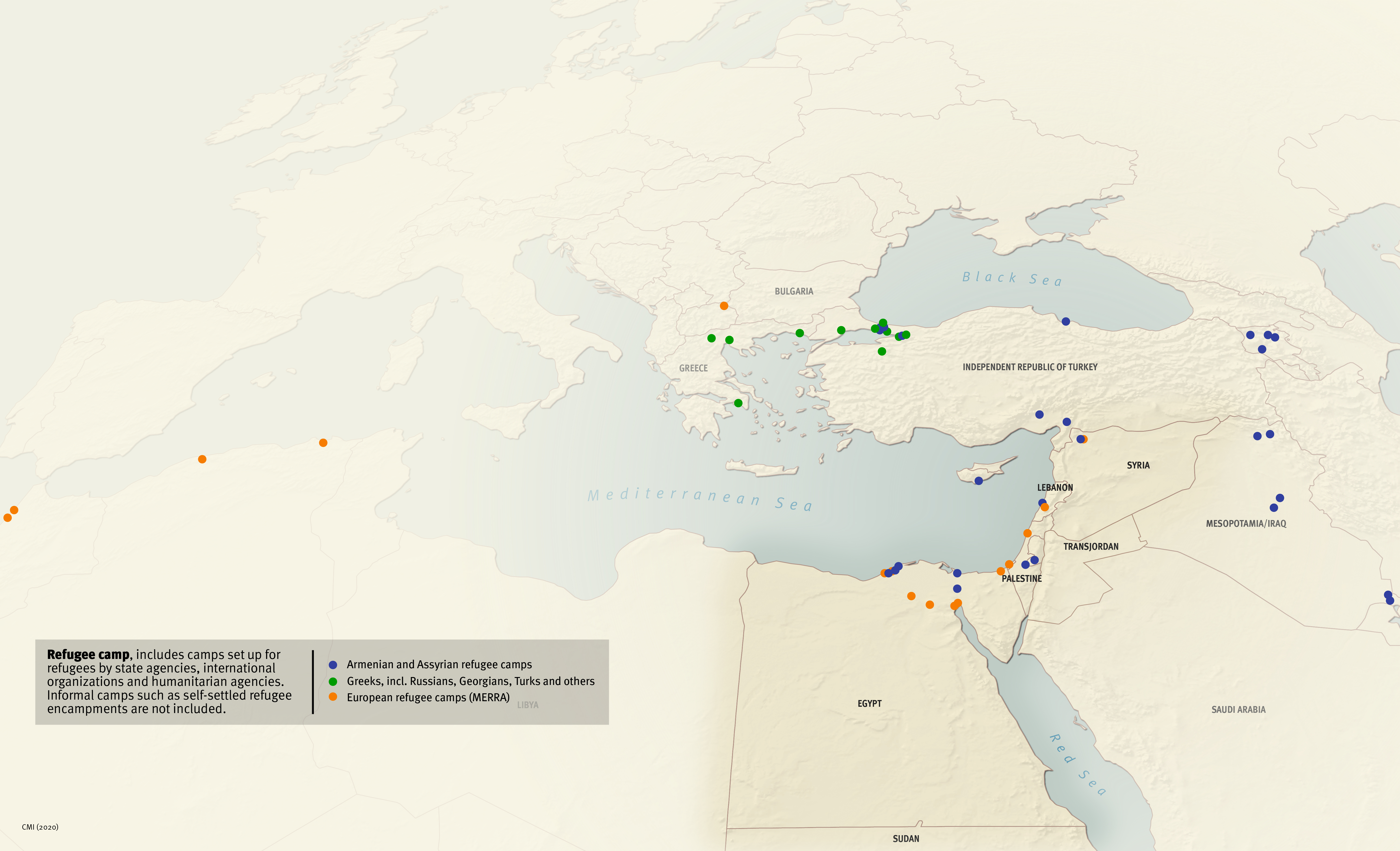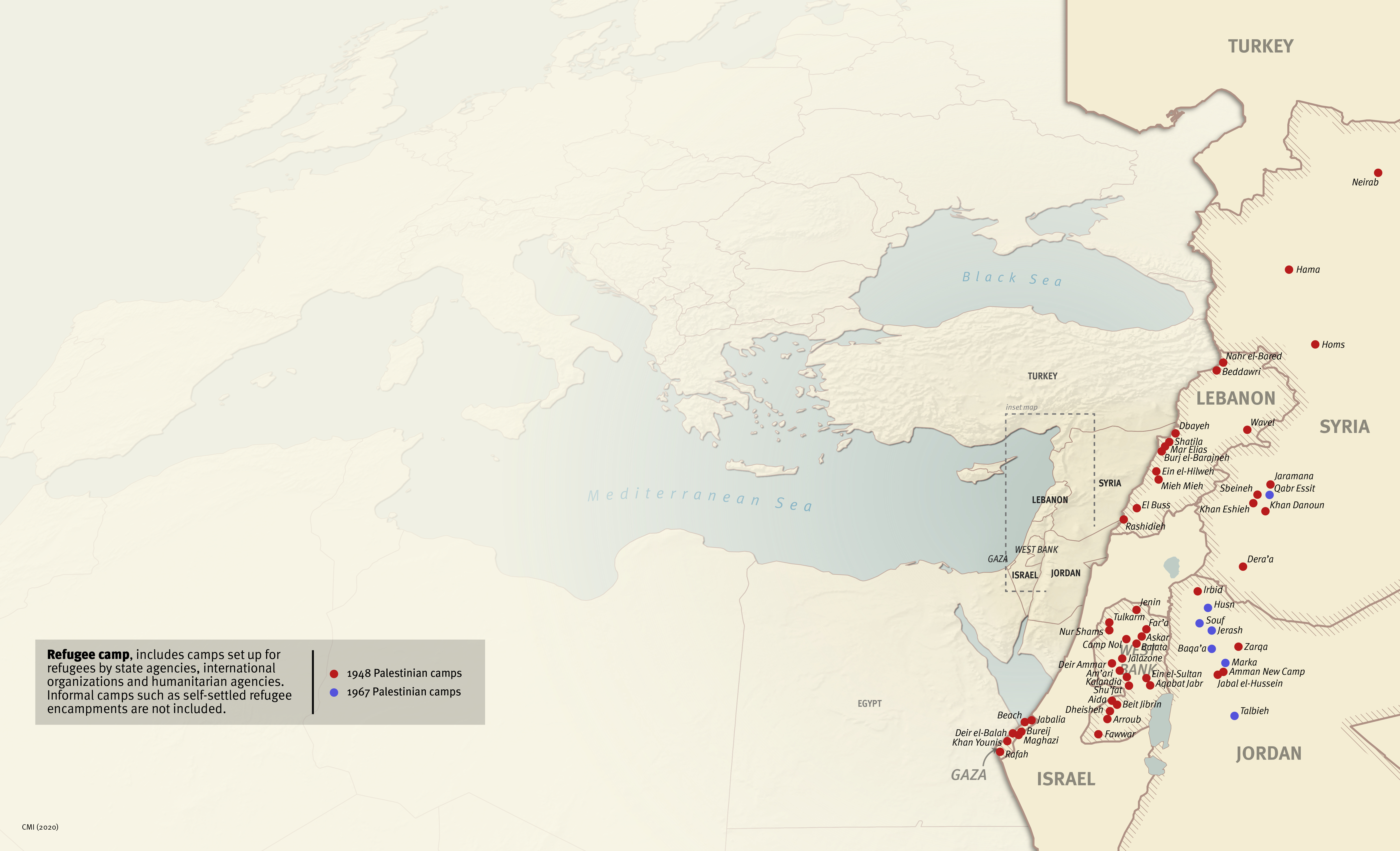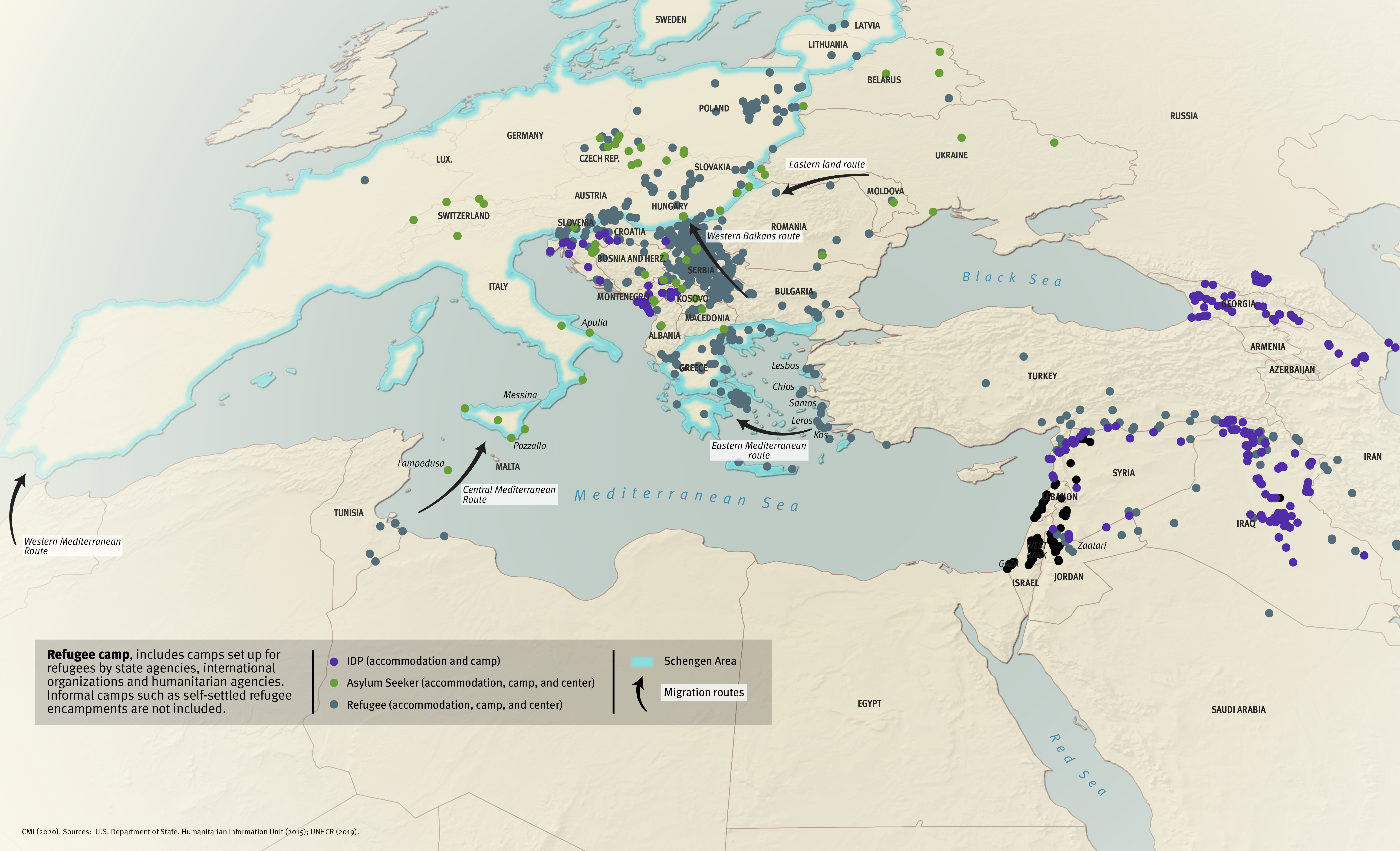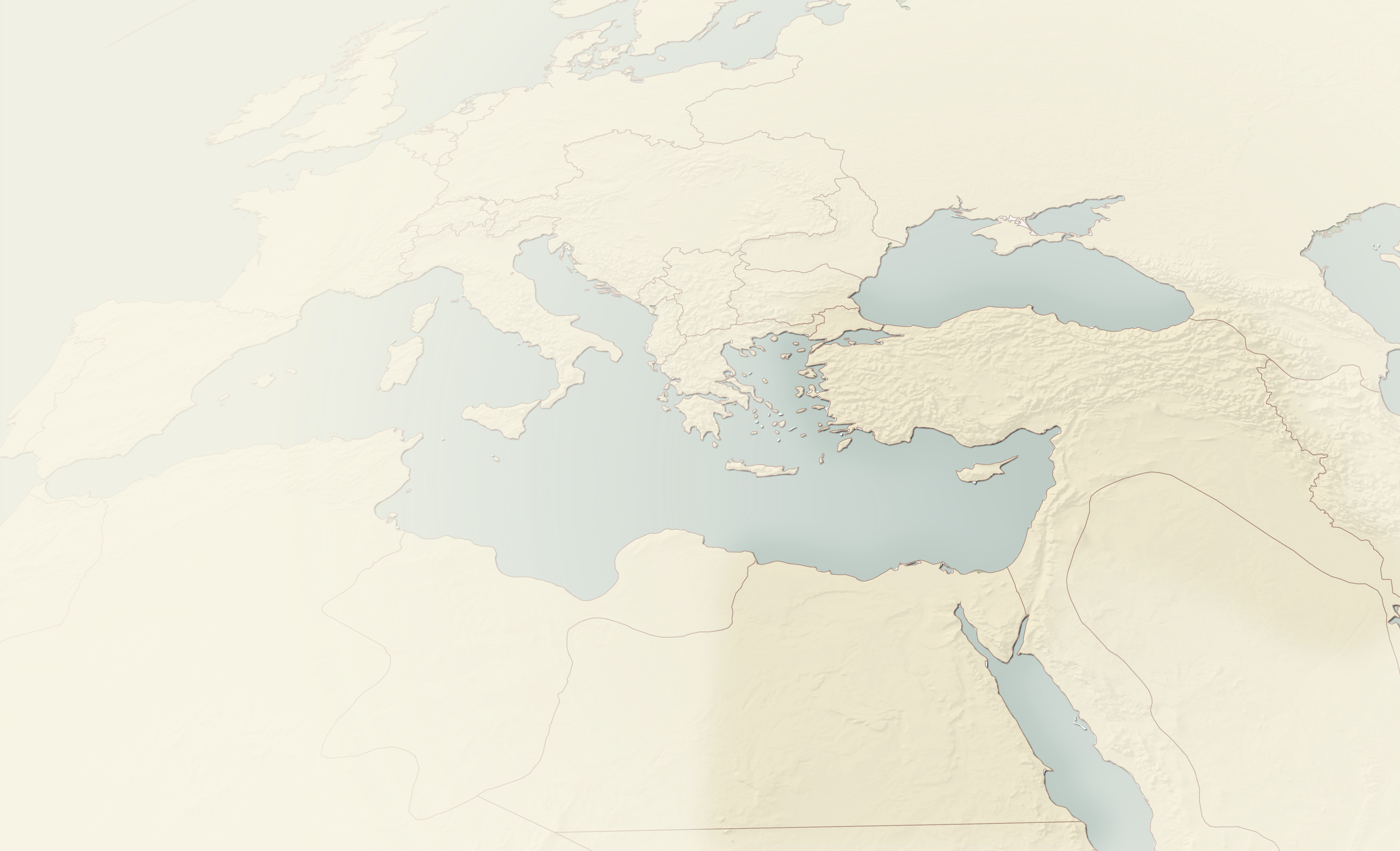1914-1948: The emergence of organised refugee camps
During the late Ottoman empire, and after 1850, more than 3 million migrants entered the empire provinces as a result of wars, and were integrated into the empire.
During and after the first world war we begin to see refugee camps in the formal sense, a temporary space run on behalf of displaces populations by other state and humanitarian actors, like the British Army and the American Red Cross, in the Middle East.
The collapsing Ottoman empire, civil wars, Ottoman massacres (Armenians, Assyrians, Greeks) and the first world war (1914-1918) led to waves of forced displacement. More people were displaced in the Greco-Turkish war (1919-1922), the Russian Civil War (1917-1922), and the Greek-Turkish population exchange (1923). Forced populations transfers were also used to create ethnic homogeneity in post-Ottoman states.

After the war, Ottoman territories in the Middle East fell under British and French control, with Syria and Lebanon falling under the French mandate and Iraq (Mesopotamia) under the British. One of the major relief organisations involved in operating refugee camps was Near East Relief (NER).
During the second world war, the Middle East Relief and Refugee Administration (MERRA) operated refugee camps in Marocco, Algeria, Egypt, Syria and Palestine for people fleeing the war in Europe.

1948 – 2000s: Camps and displacement
During the war in Palestine (1947-1949), close to two-thirds of the Arab Palestinian population fled out of compulsion and fear. The new state of Israel closed its borders, and Palestinian refugees were not allowed to return. One-third of the refugees have since been living in camps recognized by UNRWA. The majority have been living in towns and cities, and in informal gatherings.
The June war in 1967 led to a new wave of Palestinian displacement (280 000 - 325 000) and seven new refugee camps were established, most of them in Jordan. The number of official camps amounts to 59.

In 1975-76, Sahrawi refugees were displaced from Western Sahara, living since in self-managed camps in the Tindouf province (Algeria). Western Sahara’s status remains disputed.
About three million people (mainly Kurds) have been displaced in the Kurdish–Turkish conflict (1978-present). During the Iran-Iraq War (1980–88), a Kurdish rebellion was crushed, with about one million displaced in urban areas and informal camps.
The first Gulf War (1991) and the US-led invasion and occupation of Iraq (1993), led to waves of displacement of Iraqis, mainly to urban centers in Jordan (700,000), Syria (1.2 million) and the Gulf States (200,000).
New conflicts such as the War in Iraq (2003) added more refugees to neighboring countries. In 2007, there were about four million Iraqi refugees and three million IDPs.

2010 - present
Since 2011, the Syrian civil war has displaced more than five million refugees to the neighbouring (“host”) countries: Turkey, Lebanon and Jordan, with smaller numbers in Iraq.
More than six million are internally displaced (IDPs), mainly in urban areas but also in camps along the Turkish border, and about 12 million are in need of humanitarian assistance.
In 2015, more than one million migrants reached Europe over land and sea routes; the majority along the Balkan route (+850,000 persons). Since 2014, almost 20,000 migrants have died trying to cross the Mediterranean.
In addition to Syrians, several other non-European nationalities (Afghans, Iraqis and Eritreans) tried to reach Europe during and after the socalled “European migration crisis” (2014-15).
The EU closed its borders in 2016 and set up several migrant processing and detention centers ("hot spots") in Central and Eastern Europe (the Balkans), in addition to a return agreement with Turkey.


